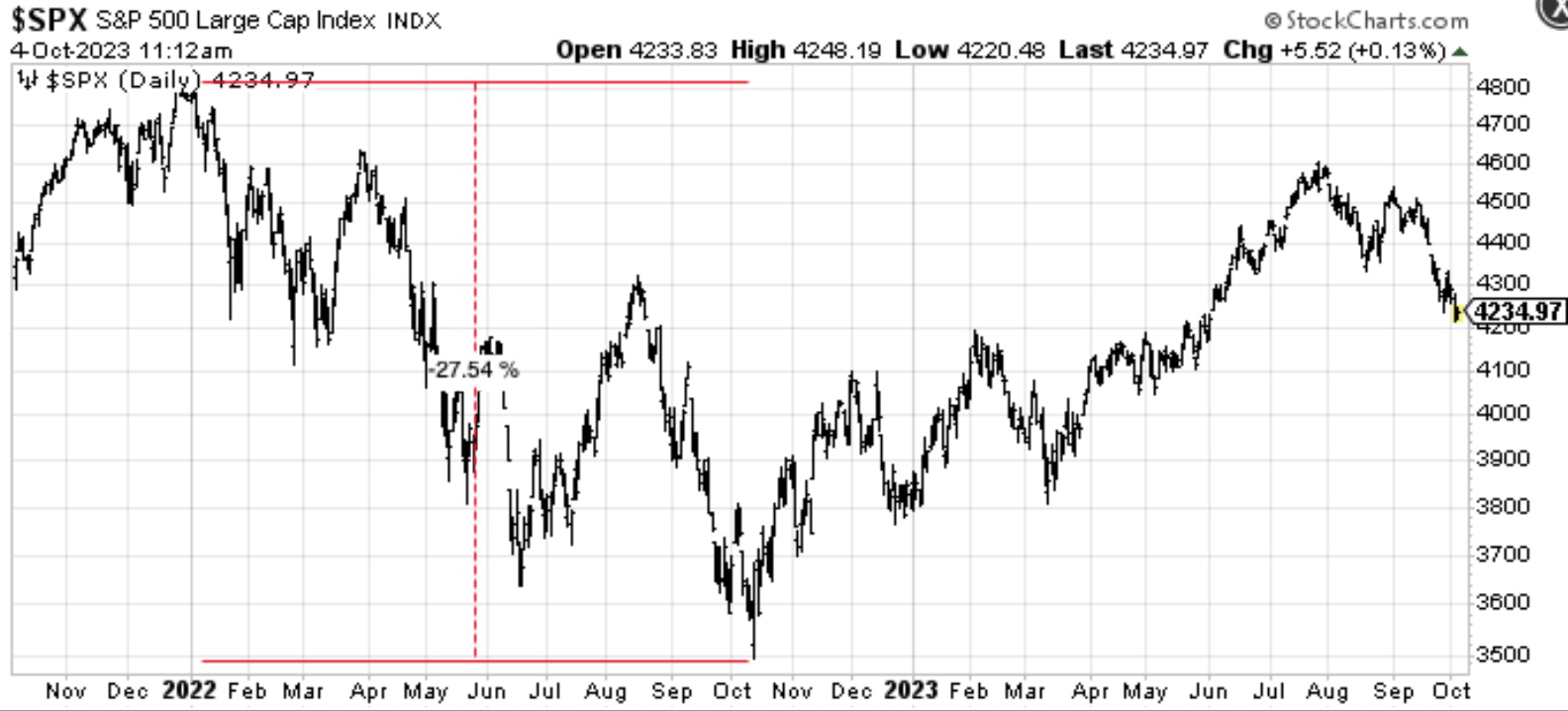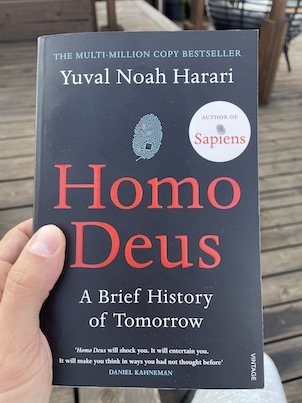The US stock market has been in a drawdown for almost 2 years since the start of 2022, when it made the last all-time high. There’s still a lot of interest in the markets among the general public, which shows people still have a lot of savings from the money supply bubble created by central banks, and the depth of decline in US market average (S&P 500) wasn’t too deep to scare people off. S&P 500 index moved a mild -27% from the top to bottom last year, whereas it hasn’t made a new high nor low this year compared to 2022.

Despite the bearish sentiment at the end of 2022 and a mini banking crisis in March this year, S&P 500 rallied +20% and Nasdaq 100 +45% in the first half of 2023, turning the indexes technically back into an uptrend. The current pullback is creating a lot of noise about the weak economy and an imminent market crash. Some try their luck calling a crash by becoming opportunistic fear-mongers, some have already called 20 crashes out of 2. Obviously the market can turn back into a downtrend anytime depending on which timeframe or signal anyone uses, but there isn’t one answer for everyone. I’m personally looking at the 4200 level in SPX to hold as a support at this moment, but a sell signal isn’t worth much without knowing when to get back in.
Tune out the noise
All the chattering going on in the news and social media has probably always been like that in some shape of form, and I can only imagine that in 2008-09 or 2015-16 there was similar noise in newspapers and forums. People try to figure out what happened in the market or with some specific stock by looking at the news, not understanding that the millions of market participants (people and computers engaged) all have their own reasons to buy or sell an asset. Furthermore, people sharing opinions or news articles try to connect a price move to some event after the fact, which is a random match most of the time.
In general, people are not good at making intuitive judgments about financial markets, at least in a consistent way that would help to make good money in the long run. I’ve seen research showing how market participants were most bullish in 2000 and most bearish in 2009 in the US stock market history. We all know what followed. The mania in growth and meme stocks in 2020-21 was no different in terms of extreme optimism. It’s easy to get caught up in recency bias and emotions for the human mind. What I don’t think we’ve seen yet, is extreme bearishness that would wipe out the retail interest. It doesn’t necessarily need to happen this time around, and I still manage my money by price only without letting such opinions interfere with my trading system even if they’re my own, but something I’ve been thinking about for some time already. Serious bear markets end with loss of interest for the general public and nobody wants to talk about stocks anymore.
Algorithms beat humans
 I recently finished reading a book “Homo Deus” by Yuval Noah Harari, which was written in 2015. It’s a deep dive into the history of humanity and possible future paths going forward. It will take the reader’s mind on a journey about our world and the meaning of life. Though it’s not about trading or financial markets, the author discusses related topics about AI, data and non-conscious intelligence replacing humanity. He describes ways how computers can know us better than we do ourselves by using algorithms to analyze lots of data, be it about science, our health or even feelings. I recognized a similar thought process that I have with my trading algorithms and understand why I let the computer make investing decisions by analyzing lots of price data. When I imagine a simple price chart of the S&P 500 index going back 20 years with all the ups and downs, and what kind of daily news and opinions could have been tied to every price move in the past, I understand how important it is to filter out the noise and ignore most of the irrelevant and random data that is not price.
I recently finished reading a book “Homo Deus” by Yuval Noah Harari, which was written in 2015. It’s a deep dive into the history of humanity and possible future paths going forward. It will take the reader’s mind on a journey about our world and the meaning of life. Though it’s not about trading or financial markets, the author discusses related topics about AI, data and non-conscious intelligence replacing humanity. He describes ways how computers can know us better than we do ourselves by using algorithms to analyze lots of data, be it about science, our health or even feelings. I recognized a similar thought process that I have with my trading algorithms and understand why I let the computer make investing decisions by analyzing lots of price data. When I imagine a simple price chart of the S&P 500 index going back 20 years with all the ups and downs, and what kind of daily news and opinions could have been tied to every price move in the past, I understand how important it is to filter out the noise and ignore most of the irrelevant and random data that is not price.
Live to fight another day
The stock market is a game of survival. I have studied traders with track records of 30-40 years to see how they’ve been managing risk to stay in the game. It’s not just about relying on good market environment and hoping that everything goes up forever. It’s about preserving capital in downtrending markets and letting it compound in uptrending ones. On a positive note, after challenging times there are often better times in the markets to make money, but it has nothing to do with our emotions or opinions, all the necessary information is embedded in price.
Share this post